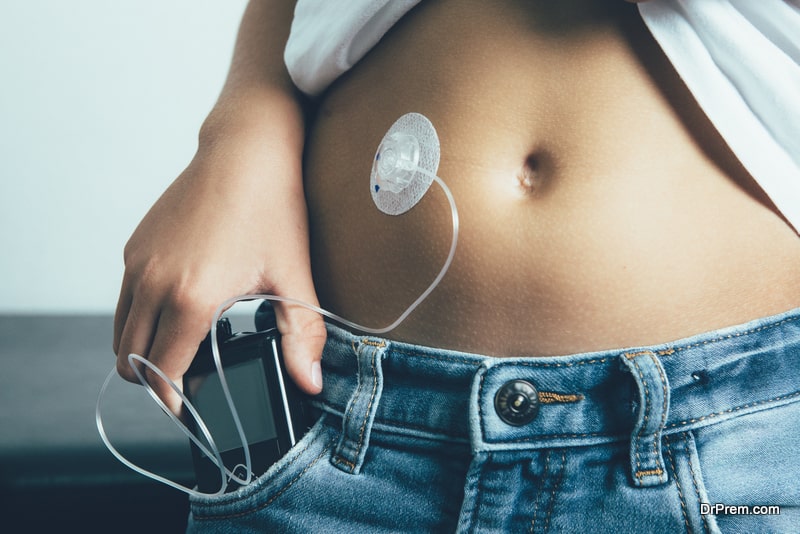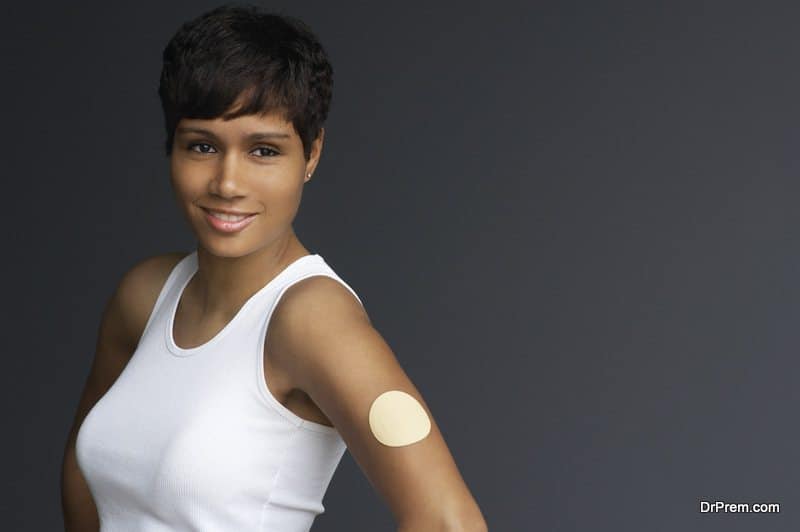Emerging trends in diabetes management technology have eased out much of the pains in regular blood glucose monitoring. Be it pocket-sized gadgets, sensors, or other digital innovations, diabetics are likely to have more convenient options than conventional needle pricks.
Globally, 422 million people suffer from diabetes according to the estimates put by WHO. This means 1 of 11 people has to manage blood glucose levels regularly to reduce the chances of stroke, kidney damage, blindness, heart attack, or amputation. By 2040, it is projected that 1 of 10 people will have diabetes. It is important for diabetics to get used to improved tech applications for better disease management. Thankfully, advancements in blood glucose monitors have been rapid. In the years to come, we can expect these to be more user-friendly, less expensive and more pervasive.
Smart Digital contact lens
It looks like diabetics may have a new hope and better living capabilities thanks to the efforts of researchers and scientist. In a latest medical breakthrough, a new range of eyeglasses and contact lens that are designed especially for diabetics will hit the market soon. Do not be fooled by the looks of the stylish eyeglasses or by the regular look of the contact lens. They are more than just a regular pair of glasses or lenses.
So what is this new diabetes management technology all about?
The upcoming range of glasses along with the lenses will have a special technology that will help to monitor the sugar levels of a diabetic. Along with that, it will also have a feature to make sure that the patient receives his or her refill of medicines on demand. The wireless communication and power up features are the highlights of this new and innovative product.
With the help of special technology, the contact lenses are also equipped with a drug-releasing feature. A patient can wear them for a month. The glasses are equally equipped with connectivity technology and wireless power up features to provide a helping hand to the patient.
By the look of it, if this combo is a success, it means that diabetics will no longer have to go through the painful process of pricking their fingers to test their sugar levels. The monitoring services will become better and this combo will help to reduce the various other complications that diabetics face due to the disease.
That is not all
Not just diabetics stand to gain from this combo. Patients who have glaucoma also stand a chance to protect their vision. The success of this new combo will provide a way to help fight the two major reasons why many people lose their vision. Today the number of patients diagnosed with Glaucoma and Diabetic retinopathy is increasing.
The reason why diabetics lose their vision is due to the high sugar levels. This damages the retina by wreaking the tiny blood vessels inside it. On the other hand, Glaucoma is a condition, which damages the optic never of the eye. Presently, the only way Glaucoma patients can deal with their situation is by using eye drops. But this does not help to stop it from progressing.
Scientists hope that with this new combo, they can find a solution to provide better release to patients who are diagnosed with these two eye conditions. Along with that, the experts may also find a solution to help take care of other eye conditions and diseases using this powerful combination.
The launch of more devices that helps in Diabetes management
Apart from the deadly combo of the Smart Glasses and Smart lenses, there is still a lot more in store for diabetics. The launch of more devices that are designed for diabetics gives an even better future for people living with the disease. Let us see what else is going to hit the market shelves.
Artificial Pancreas
This is another notable advancement in diabetes management technology where a man-made device is used to replicate the function of pancreas. The device is designed to release measured doses of insulin in response to the shifting blood sugar levels and avoid undesirable spikes. Artificial pancreas is effective for both Type 1 and Type 2 diabetic patients. Three-types of artificial pancreas are available:
- Closed loop artificial pancreas
- Bionic pancreas
- Implanted artificial pancreas
Improved CGM devices that will monitor the glucose levels continuously
In an attempt to help diabetics to deal with their condition, better CGM devices will soon hit the market. These devices will help a patient to understand his/her blood sugar patterns. These tiny implants will be placed under the skin of the stomach area.
These devices will be equipped with a sensor that will also have a transmitter. Patients will also get a wireless pager that can carry along with them. They will get regular updates about their sugar levels through the transmitter.
Normally, FDAs take 4-6 years to approve CGMs. But a recent prediction suggests, this approval period might get halved. It is likely to allow emergency approvals depending on the demand-supply condition which may affect the timeline of release.
Insulin pumps
The new range of insulin pumps will help to provide consistent, reliable and regular insulin doses for their diabetic management. The use of the catheter will help to ensure that the doses are given on time. This is will be held by tape after inserting it into the skin.
Fitness clips
Another new device that a person can wear easily is the fitness clip. A person can easily wear this on their wrist. They can also clip this device on specially designed cloths that track the physical activity of a person. They will get to know all the information like how many calorie count, amount of physical activity done for the day and even daily nutritional habits.
Prick-free wireless blood glucose monitor
Typical blood glucose monitors involve a needle prick on your finger and put the drop of blood on a testing strip. Those needing blood sugar monitoring 3-4 times a day, it could be a bothersome process. Even the popular Dario blood glucose meter is not free from pricks. However, the sensor-based FreeStyle Libre wireless blood glucose monitor released by Abbott uses “Flash” technology for accurate readings. The user has to wear the sensor in the upper arm that records the blood glucose level from the “interstitial fluid” of the body.
Medical tattoos
Electronic skin patches or digital tattoos can relieve the pain of needle prick in blood glucose monitoring. This skin patch can sense excess glucose from the sweat and direct microneedles penetrating the skin to release the drug in measured doses.
This is not all. Disposable tattoos made of pencil and paper can also monitor blood glucose levels, check sleeping patterns and deliver drugs. Copy paper and pencils are readily available which can be used to design different tattoos to monitor different health signals. The graphite content of the pencil which is a good conductor of electricity is facilitating the effectiveness of these tattoos. The specially-designed tattoos get transformed into circuits helping healthcare workers with vital signals for proper diagnosis and treatment.
Diabetics Witness A New Advancement In Technology With The Diabetes Implant Device
With the advent of implant devices, medical aid has been considerably improved. However, as of now, there is no such device that can aid in informing the patient about what is going on inside their bodies, especially for diabetic individuals. Diabetes implant device is a step in the right direction as far as modern science is concerned.
True that knee implants and other medical surgeries are quite common, but there is no such device made that speaks to you if anything is haywire inside of your system. Diabetes implant device has not yet made its way into the mainstream medical treatments, but it claims to help bring about the correct treatment. Let us find out how.
What is a Diabetes Implant Device?
This device is a product that is placed under the skin and is one of the best continuous glucose monitoring devices. It is fluorescent based and works like a charm. Moreover, it does not come with the drawbacks of almost every other implant device. It is about less than half-an-inch in length and is usually inserted into an individual’s upper arm.
These implantable continuous glucose sensors are associated with measuring the glucose levels in the body by remaining in constant contact with the interstitial fluids present just below the skin.
The actual sensor is laced with a biocompatible material and does not have to be inserted and reinserted on a weekly basis. The monitor or the receiver of these signals sent by the sensor needs to worn around the arm for it to display the correct readings.
However, research is being carried out to develop a Bluetooth device which can display the same effectiveness in readings even from an arm’s length. This will be super-convenient since then one will be able to carry it around in their pockets.
What are its functions?
This diabetes implant device is majorly designed to notify the decreasing or increasing glucose levels in the bloodstream. It immediately sends signals to the display screen reader and immediate actions can then be taken.
Also, the use of this continuous glucose monitoring device is not just limited to diabetes alone. It can also be used for people who are undergoing treatment for the peripheral artery. This condition is known to reduce the flow of oxygenated blood in the arms and legs. These implantable continuous glucose sensors can be used in such situations too to notify the decreasing oxygen flow to the specified body part.
How efficient and accurate is the performance of the diabetes implant device?
The problem with most continuous glucose monitoring devices is that they stop working after a few weeks or months. Due to their obvious flat surface and nature of the material, the body immediately starts recognizing it as a foreign material.
In response, the blood cells start coating it with scar tissue in order to define a boundary between the body and the device. This often results in it becoming inactive after a while since these implantable continuous glucose sensors no longer have access to the capillaries.
However, this newly developed implantable continuous glucose sensors pose no such issue. It has been purposefully designed to be smaller and has no flat surfaces which the body may recognize as foreign. Also, it is soft and rubbery like a contact lens and can blend well with the body’s system, thereby ‘fooling’ it.
Is diabetes implant device the future of biosensors?
With technology advancing in so many beneficial ways and new medicines coming up, the use of biosensors and continuous glucose monitoring devices is definitely bound to happen. Sooner or later, we are going to have devices that will ease our functions and bring about convenience in our lives.
This diabetes implant device aims to achieve precisely that. And with plenty of advantages and most of its drawbacks eliminated, it is bound to make its way into our lives in the near future.
True that diabetes is a condition that needs utmost and constant care, especially for people whose diabetes has advanced to a higher degree. They need to be extremely careful of their glucose and insulin levels to avoid further complications. However, the trouble of physically checking your glucose levels can be eliminated with the help of this device. One can now invest their time doing something better instead of having to constantly worry about their glucose levels since the implanted device will be doing pretty much all the work for you.













